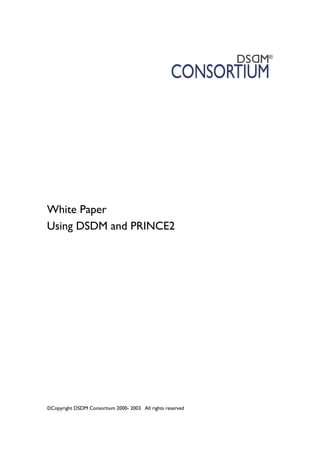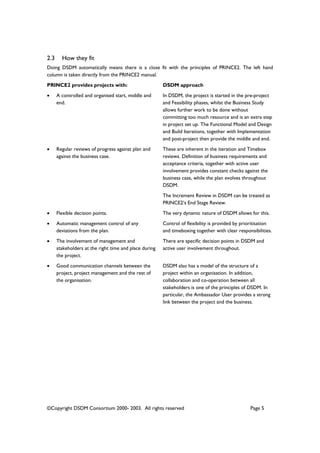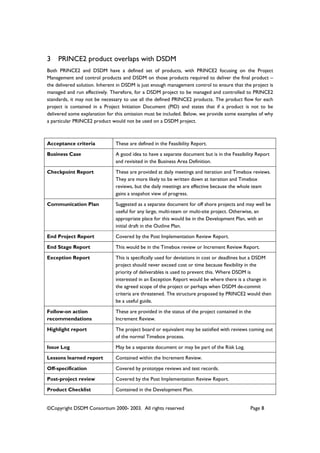This document discusses how the project management methodology PRINCE2 can be used alongside the agile project methodology DSDM. It finds that while the two approaches overlap in some areas, DSDM is focused more on product delivery while PRINCE2 provides management controls. The document provides examples of how PRINCE2 products map to DSDM products and outputs. It suggests breaking down the large PRINCE2 Project Initiation Document into smaller initial planning documents covered by DSDM. The development plan is still recommended to refine later phase activities.













